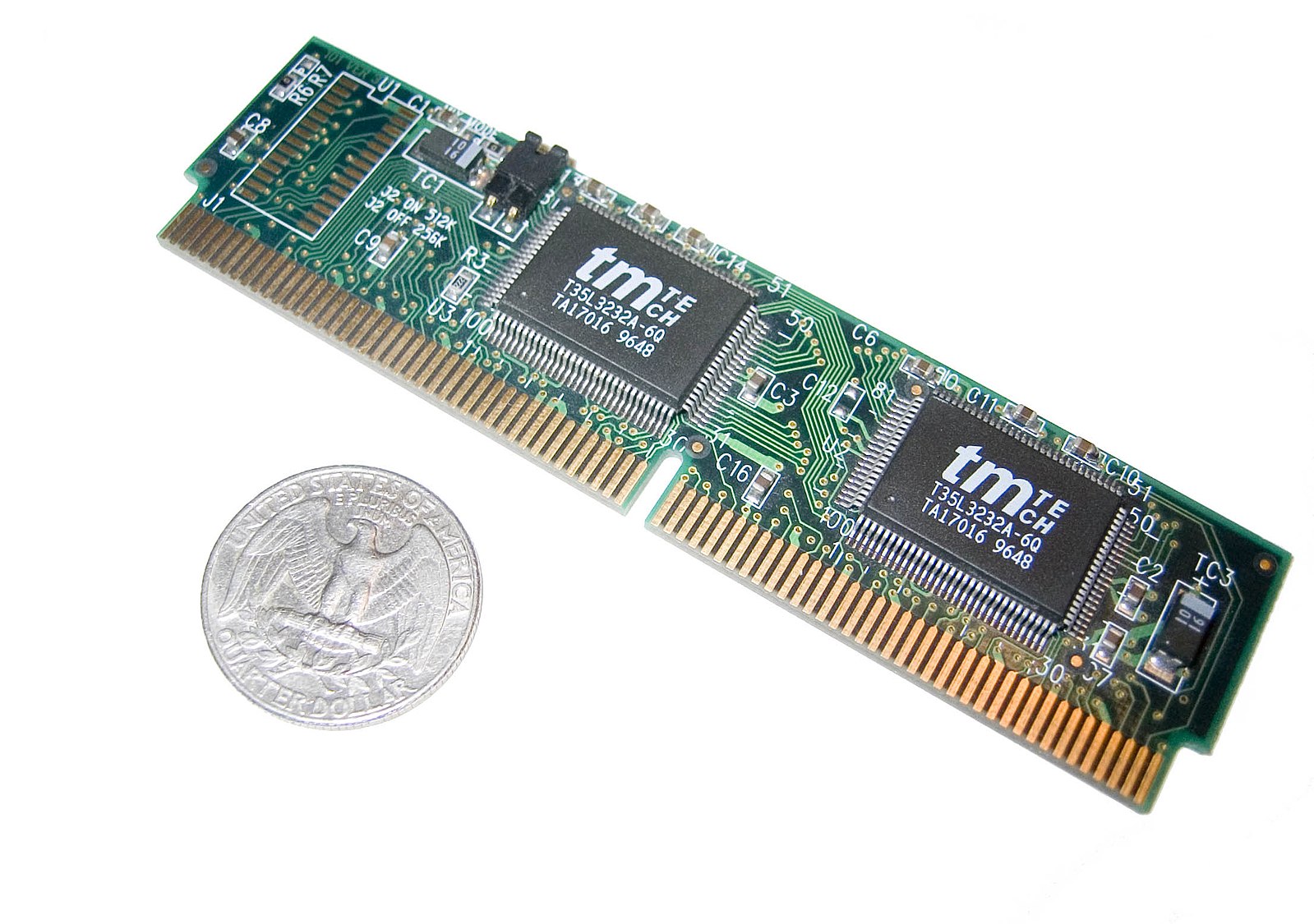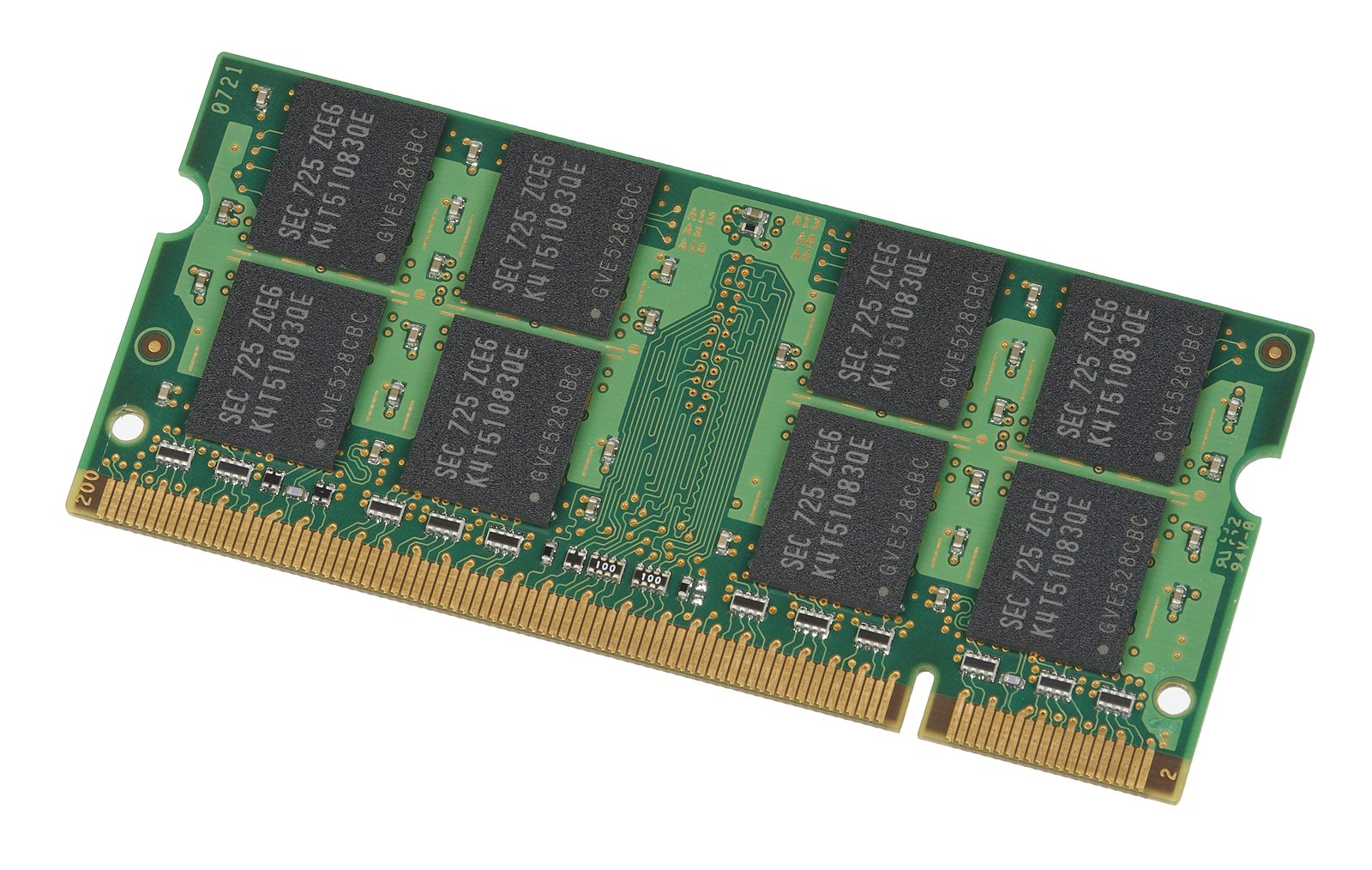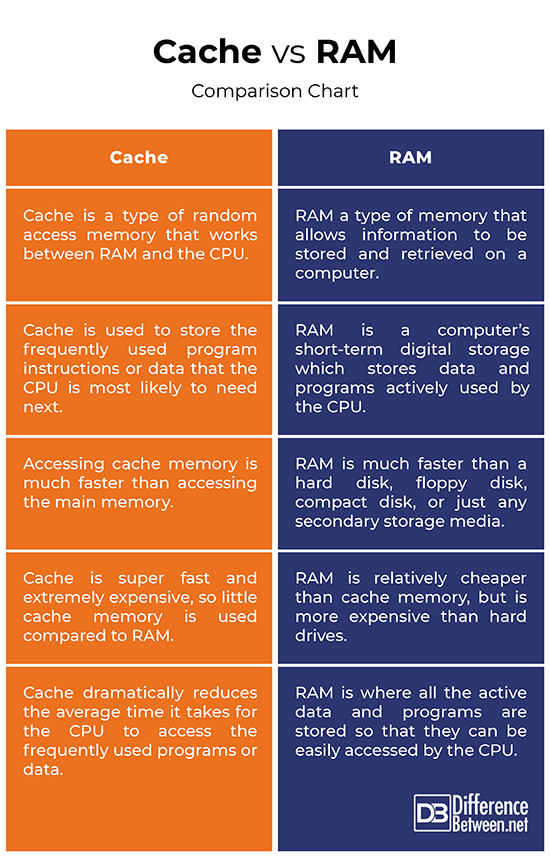Difference Between Cache and RAM
Both RAM and cache are volatile memory used to store data. Cache is a high-speed storing mechanism used by the CPU to provide faster access to frequently used program instructions or data likely to be requested by the CPU for its next operation. RAM is a form of computer memory used to temporarily store all the information your computer is actively using for faster access.

What is Cache?
Cache is a fast memory component used by the central processing unit (CPU) of a computer to provide faster access to frequently used program instructions or data that the CPU is likely to need next. Cache is small, fast memory that is conceptually and physically close to the CPU, thus more accessible to the processor. It dramatically reduces the average time it takes for the CPU to access desired information. The idea is to design a memory controller that can move data back and forth between slow and fast memory in hardware. Cache memory is sometimes called CPU memory because it is inserted between the processor and the main memory to decrease the average access time for data. Cache memory is categorized as levels: Level 1 cache (L1 cache) or primary cache, Level 2 cache (L2 cache) or secondary cache, and Level 3 cache (L3 cache) or tertiary cache.

What is a RAM?
RAM is an acronym for random access memory, a type of computer memory that allows information to be stored and retrieved on a computer. RAM is a short-term digital storage of a computer. All requests, whether instructions or data, go to the random access memory. RAM is a volatile memory, but it provides infinite write cycles and fast read and write operations, making it suitable for the main memory of electrical equipment. It is an extremely fast computer memory which temporarily stores all the information your computer is actively using for faster access. The data to be processed by the computer changes frequently. So the data must be stored in a type of memory from which they can be easily read by the microprocessor, modified and written back for storage. So, the RAM basically stores all the things you need instantly like a computer’s working memory. However, it is a volatile memory, meaning it cannot hold data when the power is interrupted.
Difference between Cache and RAM
Meaning
– Both RAM and cache are volatile memory, meaning they need power to maintain the stored data and they will lose data, when the power is interrupted. RAM, short for random access memory, is an extremely fast computer memory which temporarily stores all the information your computer is actively using. Cache memory, on other hand, is a type of random-access memory that works between RAM and the CPU, and that provides faster access to frequently used program instructions or data that the CPU is most likely to need next.
Proximity
– Cache is a small and very fast memory component located between the computer’s primary memory (RAM) and its processor. Cache memory is sometimes called CPU memory because it is conceptually and physically located close to the CPU, which stores copies of data or instructions from frequently used main memory locations in order to provide high-speed access by the processor. RAM, on the other hand, is a computer’s short-term digital storage which stores data and programs actively used by the CPU. Cache is located closest to the CPU.
Operation
– Cache is one of the fundamental components of computing which can be used in two ways: cache memory which holds copies of data and instructions from RAM and disk cache, a section of primary memory which stores relatively large blocks of frequently accessed data in order to speed up the data transfer from the hard disk to RAM. RAM, on the other hand, is where all the active data and programs are stored so that they can be easily accessed by the CPU.
Cost
– Cache is super-fast and extremely expensive. This is why there is a very little of cache memory used compared to RAM because it is very expensive. Therefore, to reduce the cost of computers, hard drives are used to store huge amounts of data because they are much cheaper than a megabyte of RAM. RAM is relatively cheaper than cache memory but is more expensive than hard drives.
Performance
– The more the cache memory, the faster your computer will go. RAM is much faster than a hard disk, floppy disk, compact disk, or just any form of secondary storage media. On an average, it takes roughly 8 to 16 ms to access data from a hard disk drive, while accessing the same data from RAM takes about 50 to 80 nanoseconds. Cache is a very fast and small memory capable of delivering data at or near the speed of the CPU. Accessing cache memory is much faster than accessing the main memory.
Cache vs. RAM: Comparison Chart

Summary of Cache vs. RAM
Both RAM and cache are volatile memory, meaning they need power to maintain the stored data and when the power is interrupted, the data is gone. Cache is used to store the frequently used program instructions or data that the CPU is most likely to need next, while the RAM is a computer’s short-term digital memory which stores data and programs actively used by the CPU. Cache is random access memory which works between RAM and CPU as a very fast buffer to hold instructions and data likely to be requested by the CPU for its next operation.
- Difference Between Caucus and Primary - June 18, 2024
- Difference Between PPO and POS - May 30, 2024
- Difference Between RFID and NFC - May 28, 2024
Search DifferenceBetween.net :
Leave a Response
References :
[0]Image credit: https://commons.wikimedia.org/wiki/File:Samsung-1GB-DDR2-Laptop-RAM.jpg
[1]Image credit: https://commons.wikimedia.org/wiki/File:Samsung-1GB-DDR2-Laptop-RAM.jpg
[2]Image credit: https://commons.wikimedia.org/wiki/File:Cache-on-a-stick_module.jpg
[3]Handy, Jim. The Cache Memory Book. Burlington, Massachusetts: Morgan Kaufmann, 1998. Print
[4]Przybylski, Steven A. Cache and Memory Hierarchy Design: A Performance Directed Approach. Amsterdam, Netherlands: Elsevier, 2014. Print
[5]Jacob, Bruce, et al. Memory Systems: Cache, DRAM, Disk. Burlington, Massachusetts: Morgan Kaufmann, 2010. Print
[6]Gilster, Ron. PC Hardware: A Beginner’s Guide. New Delhi, India: Tata McGraw-Hill Education, 2001. Print
